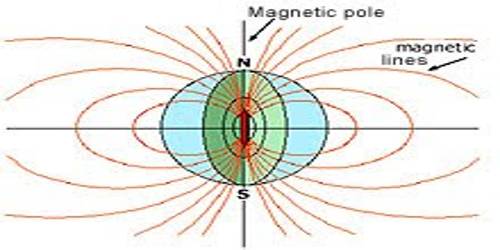Some important terms relating to terrestrial magnet
Terrestrial Magnetism is the magnetic field of the earth and near-terrestrial space; a branch of geophysics that studies the spatial distribution and temporal changes of the geomagnetic field, as well as the related geophysical processes in the earth and the higher atmosphere.
Terrestrial magnetism is caused by the action of enduring sources, which are located within the earth and experience only slow secular variations, and by external (variable) sources, which are located in the earth’s magnetosphere and ionosphere.
(1) Geomagnetic pole: Earth is a magnet. It has two poles. These are called geomagnetic poles. The two places of the earth where, if a magnetic needle is suspended through the center of gravity, its magnetic axis remains in vertical position, the two poles of the earth exist there.
(2) Magnetic axis: The hypothetical line connecting the two geomagnetic poles is called the terrestrial magnetic axis.
(3) Magnetic meridian: The imaginary vertical plane passing through the magnetic axis of the geomagnetic is called magnetic meridian.
(4) Geographical axis: The imaginary line connecting the two geographical poles is called geographical axis.
(5) Geographical meridian: The imaginary vertical plane passing through the geographical axis is called geographical meridian.













